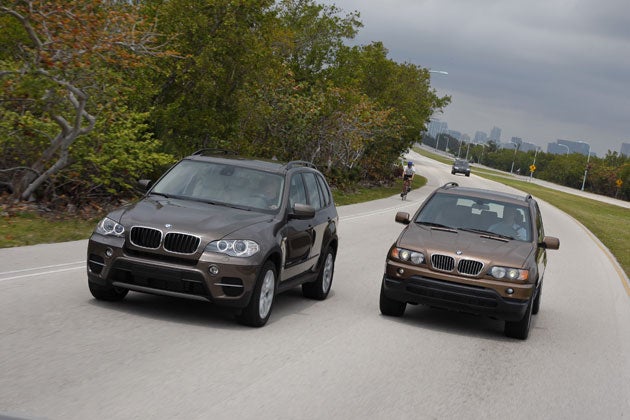BMW's X5 reaches the million mark

Your support helps us to tell the story
From reproductive rights to climate change to Big Tech, The Independent is on the ground when the story is developing. Whether it's investigating the financials of Elon Musk's pro-Trump PAC or producing our latest documentary, 'The A Word', which shines a light on the American women fighting for reproductive rights, we know how important it is to parse out the facts from the messaging.
At such a critical moment in US history, we need reporters on the ground. Your donation allows us to keep sending journalists to speak to both sides of the story.
The Independent is trusted by Americans across the entire political spectrum. And unlike many other quality news outlets, we choose not to lock Americans out of our reporting and analysis with paywalls. We believe quality journalism should be available to everyone, paid for by those who can afford it.
Your support makes all the difference.BMW has now produced a million X5 luxury 4x4s at its US plant in Spartanburg in South Carolina.
When the X5 was introduced in 1999, it was described as the first of a new category of car, the Sport Activity Vehicle. The original 1970 Range Rover was probably the first off-roader to offer decent on-road performance, and Toyota's 1994 RAV 4 pioneered the concept of an agile 4x4 offering truly car-like behaviour, but for most of its life, the X5, now in its second generation, has certainly staked a strong claim to be considered the best-handling 4x4 on the road.
Comparisons with the Range Rover are especially appropriate; at the time the X5 was introduced, BMW still owned Land Rover and had access to its 4x4 expertise, although the British company was shortly afterwards sold to Ford, and later acquired by Tata of India. BMW subsequently expanded its range of 4x4s to include the mid-sized X3 and the more overtly sporting X6, as well as the smaller X1.
With the X1, BMW last year joined the trend for manufacturers to offer SUVs in two-wheel drive as well as four-wheel drive form, on the grounds that many owners never take their cars off road but still value the practicality and high driving position offered by an SUV body. Two-wheel drive SUVs also tend to offer better fuel consumption and lower CO2 emissions than those with all-wheel drive as they are lighter. There's no sign so far of BMW extending this thinking to its more expensive SUVs such as the X5, though.
While Spartanburg originally built the Z3 roadster, and its successor, the Z4, production of sports cars was transferred to Germany in 2008, leaving BMW's US plant as the main centre of production for the company's 4x4s. As well as the X5, the X6 is also made there; production of the X3 will switch to Spartanburg from Europe later this year, when a new, second-generation model is introduced.
Join our commenting forum
Join thought-provoking conversations, follow other Independent readers and see their replies
Comments